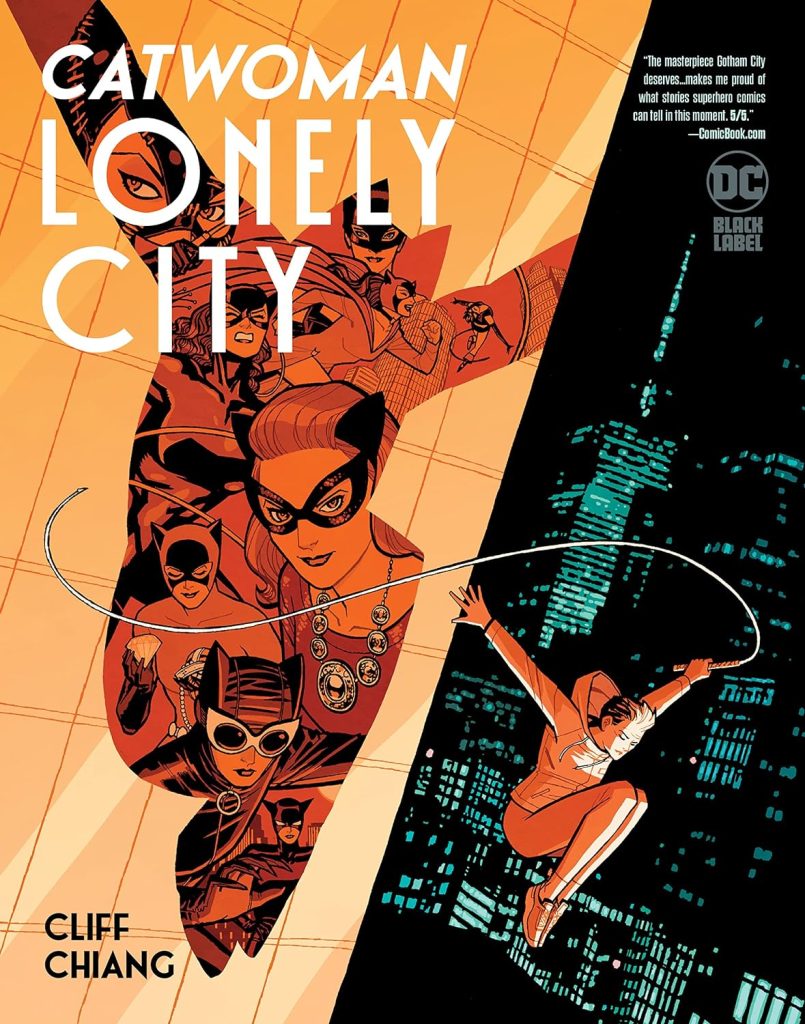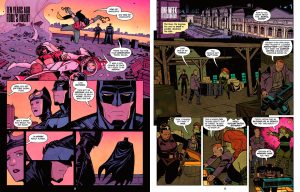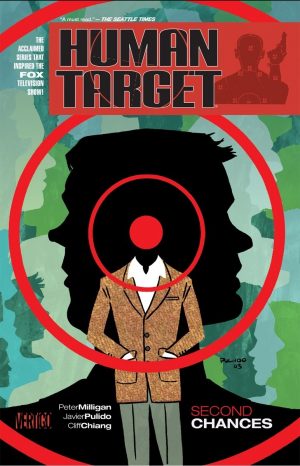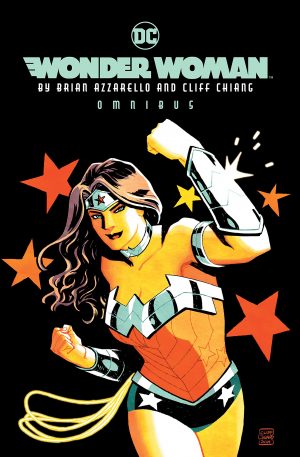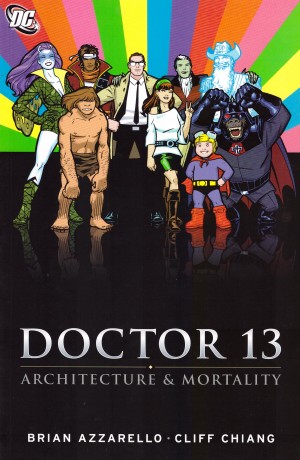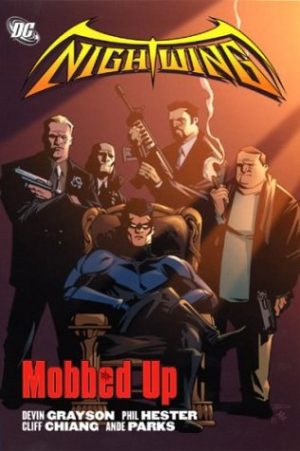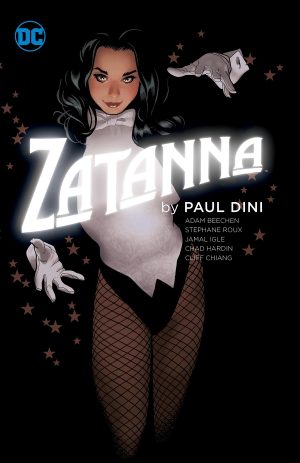Review by Woodrow Phoenix
Lonely City is set in a future Gotham, the date unspecified, but references made to a pivotal incident place it around 2035. Batman is dead. So is Nightwing, Commissioner Gordon and the Joker. There is little freedom of movement in a city aggressively policed by a paramilitary force known as ‘Batcops’ who wear body armour with bat-eared helmets, backed by an extensive surveillance grid that watches everyone and everything. Selina Kyle has just been released from a ten-year jail sentence. She’s 55, her knees hurt, and she’s a relic of a time long gone. She is also haunted by the last words Batman spoke to her before he died. What is ‘Orpheus’?
This beautifully designed 200-page hardcover is entirely the solo work of Cliff Chiang who drew a highly-regarded run of Wonder Woman before becoming the Eisner Award-winning artist for Paper Girls. Here, he pencils, inks, colours, letters and also writes Lonely City, creating an enthralling love letter to the world of Batman that is very clearly influenced by The Dark Knight Returns. It doesn’t operate at the same epic, larger-than-life level of Frank Miller’s near-mythic demi-Gods but instead is pitched much lower, mostly unfolding like a police procedural with the same patient mode of observational, moment by moment storytelling. This fits Chiang’s elegant drawing style of crisply graphic naturalism also seen in artists such as Chris Sprouse and Chris Samnee; art that frames superhero and science fiction action from a human-level perspective. It emphasises the emotional and physical costs of violence, the effort expended and the constraints the characters strain against.
Lonely City shows Catwoman feeling her age and her displacement, quickly realising she can’t operate alone anymore and creating a new network from some people who also remember a former Gotham. Familiar characters from the past are all thoughtfully depicted, smartly realised in this new context, and Catwoman soon has a crew to carry out several audacious heists in preparation for the big one: finding and breaking into the last remaining, greatest secret of the Batman. The Batcave. The plotting features many excellent twists and turns, studded with callbacks and some great surprise inclusions. If there’s a weakness it’s that Chiang’s careful, stylishly rational visual approach sometimes isn’t cartoony enough for the extremes of characters like the Joker, who conveys no menace at all in an anatomically correct, but boringly straightforward appearance.
Much of Lonely City relies on knowledge of Batman’s comics and TV history to really hit home, but the structure makes it all work even if you don’t have the emotional responses older readers will have to this revisionist tour-de-force. It’s a resonant exploration of a potential future for new and old Bat-fans alike, respecting Catwoman as a character and creating something memorable from her long history.
Nineteen pages of extras follow the story: four variant covers for the original issues by Cliff Chiang and four more variant covers by Jock, Marguerite Sauvage, Annie Wu and José Luis Garcìa-Lōpez; notes on the process of making Lonely City by Chiang’s editor Chris Conroy showing the progression of a page from rough layout to pencils, inks and colour; and nine pages of Chiang’s character designs.
